The Ground is Falling 寰宇直下
25 SEP 2021 - 06 JAN 2022
| 策展人 CURATORS |
|---|
| 龙星如 Iris LONG |
| 艺术家 ARTISTS |
|---|
| 刘昕 Xin Liu |
| 主办 ORGANIZER |
|---|
| 阿那亚艺术中心 Aranya Art Center |
没有什么比“宇宙”在今天更接近人与非人世界联系的想象。不论是俄国宇宙主义视角下,宇宙将 过去之物复生至永生的设定,还是媒介技术工程学所展开的关于星球工程的论述(Hansen, Bratton),抑或诸多女性生态主义研究者在宇宙背景下重新思考过去、当下和未来之间“不止人类”(more than human)的纽带与遗产,并饱含敬畏所建构的深切伦理,这颗装载了永生想象,工 程信念和新物种伦理的宇宙,正在多重向度上开始趋于极致和极端。
我们似乎已经某种意义上完成了“世界作为一个球体”的连续不断的形而上学工程(Yuk),和物理 上沿着圆球弧面的文明扩张。过去半个世纪,我们也经历了虚空中的蓝点所象征的总观效应( overview effect),和巴克敏斯特·富勒(Buckminster Fuller)在地球圆形结构上所投射的整一观照, 而此刻我们所处之地,或许更关于“总观之后”和“蓝点之外”所发生的一切(what's beyond the overview and the blue dot)——一个不再可用“球形”充分解释的行星存在,它不再受限于对“外 面究竟有是什么”的想象,甚至“外部”可能随时消失。
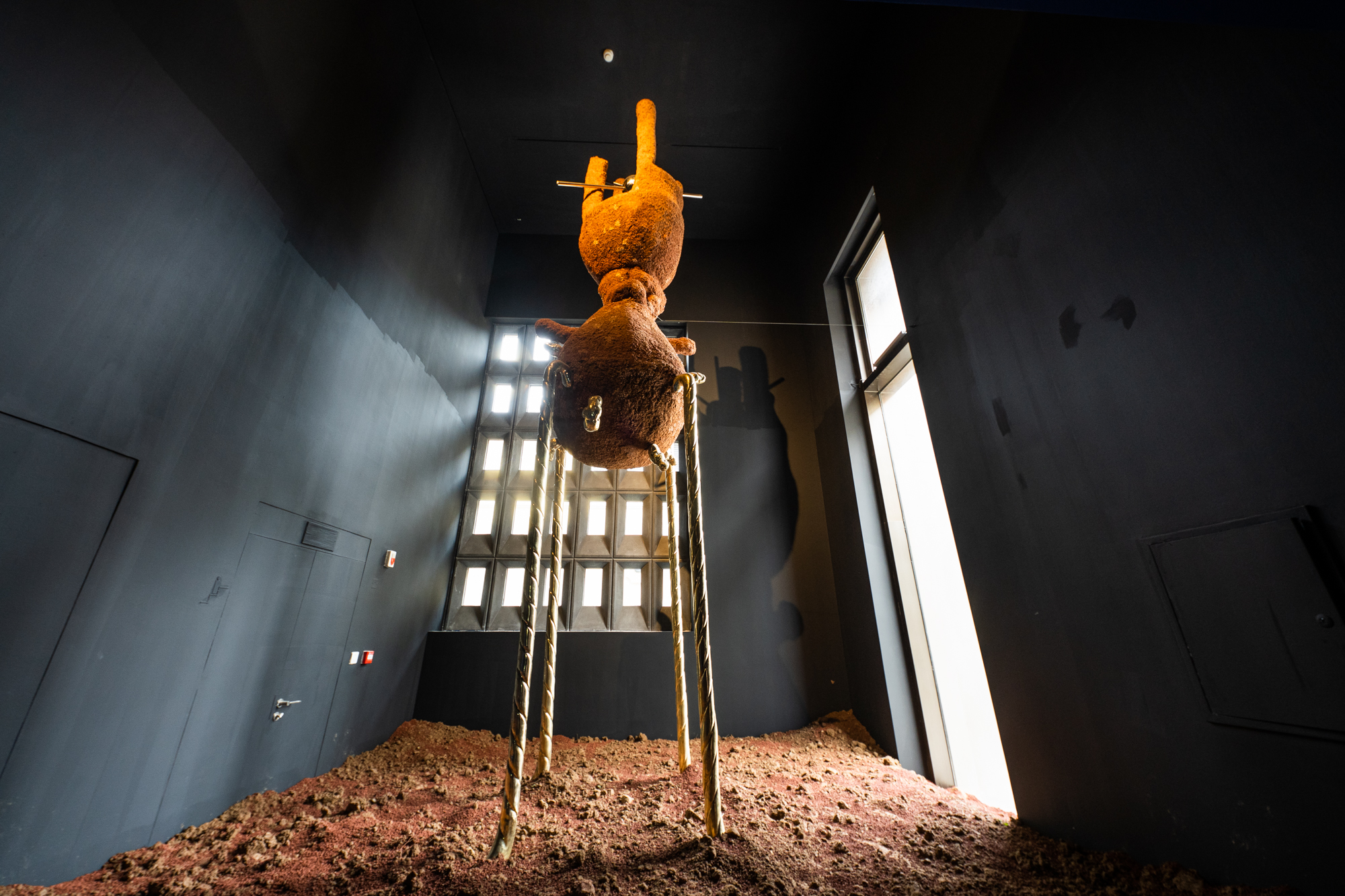
在蓝色起源和SpaceX助推人类对载人航天的关注,乃至引发“新太空时代”壮语的同时,精确宇宙 学的发展也进一步探向了虚空中缄默的暗物质,助推器的火焰和高能宇宙射线在深空中形成显化 与内隐,表与里的多重胶葛。宇宙在垂直向度之外的,与科学和意识相关的拓扑,也正是展览试图 探索的起点。刘昕在长期的工作中将自身置于天体物,深空经验和宇宙生态等种种话题的边界线 ,以及多学科语言的不断转译中。艺术家在保留了一贯以来围绕测绘、建模和精准仪器展开的工 作方法的同时,试图在展览的现场建构三条穿插的线索:一颗由载人航天设备运往空间站,并前往 异星的土豆种子,一颗从天而降的虚构“白石”,以及一串串迭宕在地球轨道和地表之间的卫星信 号。它们似乎都在某种运动态势中:设备旋转,土豆发芽,天空中落体轰隆作响。展览中出现的技 术物,植物,残骸,土壤,影子,人类,似乎都被一种更不可言说的宏观规则所主宰——不论是否 以“宇宙”之名。这一不可见的宏观能量也勾连起更原始性的联想, 在展览的垂直向度上螺旋展 开。
离地飞行可能是征途也可能是流亡,跌入地心可能是回到地轨。单向度的垂直宇宙开始面临认识 论上的重组,工程上限和力学极限之外,投注在太空中的政治、技术和文化力量,也构筑了往深空延伸的另一种深层时间(deep time),它迫使我们重新思考我们所印刻或编织的一切:太空中的人,残片,信号,矿产和种种猜测与推演。深空叙事的向度和速度,正在被缓缓化解为更多样,婉转,纠缠和内化的形态,工程学的宇宙和有代谢的宇宙或许可能归一(henosis)。展览所投影的,只是诸多潜在叙事的其中一个版本,它坍缩成一个由一人之躯讲述的具体深空,此处,寰宇直下。
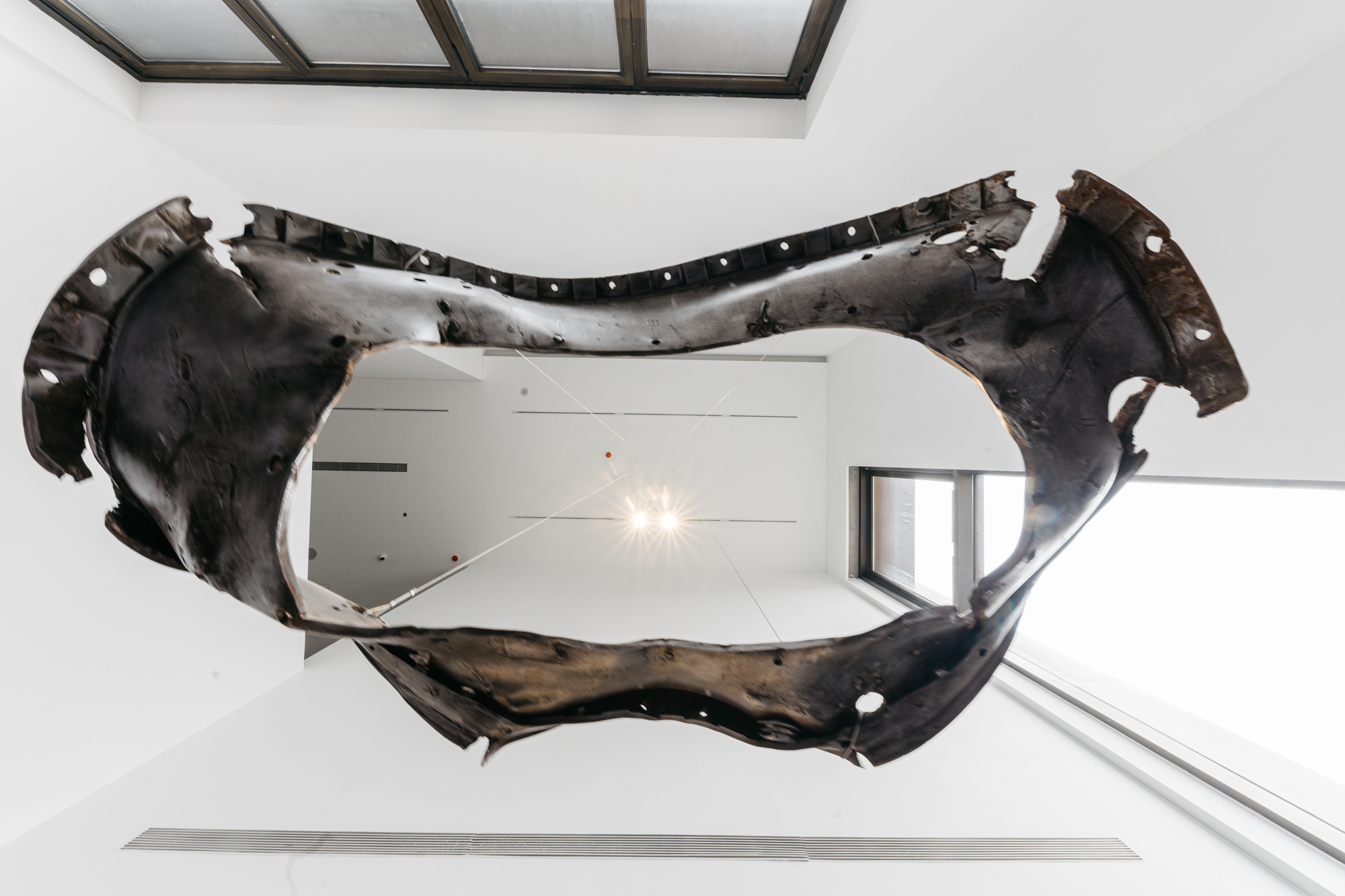
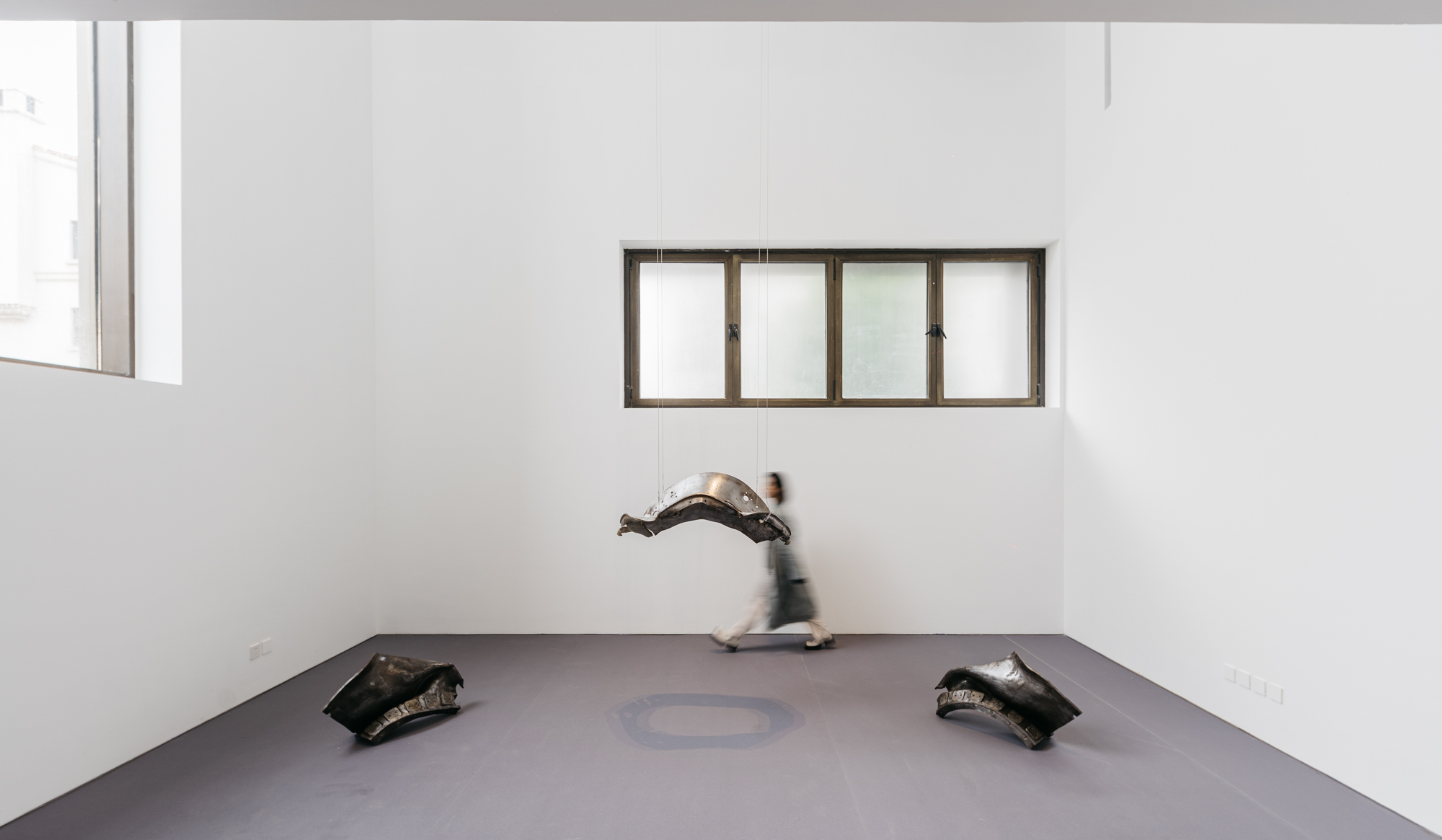
Nothing is closer to our vision of the connection between human and non-human worlds than the cosmos today. That vision encompasses the perspectives of Russian cosmism, in which the universe resurrects and even immortalizes the past discussions of planetary engineering (Hansen, Bratton); and the many feminist ecologists reconsidering the bonds and legacies of being “more than human” in the cosmic past, present, and future, building a profoundly ethical sensibility rooted in reverence. This universe, loaded with visions of eternal life, faith in engineering, and a new ethics of species, is tending toward the ultimate or extreme in multiple ways.
In a sense, we seem to have completed not only the continuous metaphysical engineering project that is “the world as a sphere” (Yuk), but also the physical civilizational expansion that has followed the curve of that sphere. Over the last half-century, we have already witnessed the overview effect, symbolized by the blue dot, and seen the full reflection that Buckminster Fuller projected onto the Earth’s spherical structure. Perhaps now we ought to consider what lies beyond the overview and the blue dot—a planetary existence that can no longer be fully described as “spherical” and can no longer be limited by a vision of what’s out there. To some extent, the “outside” could disappear at any moment.
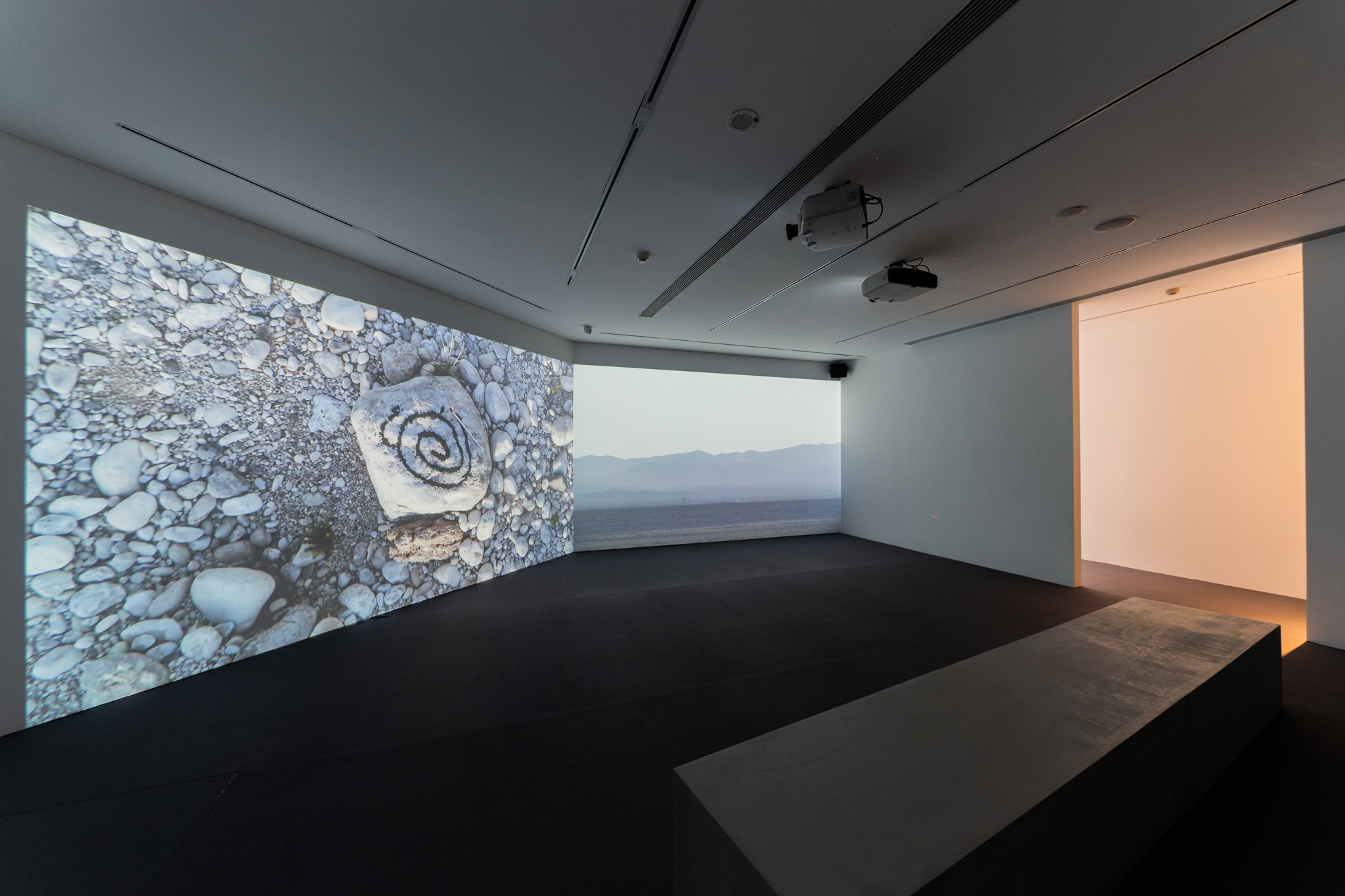
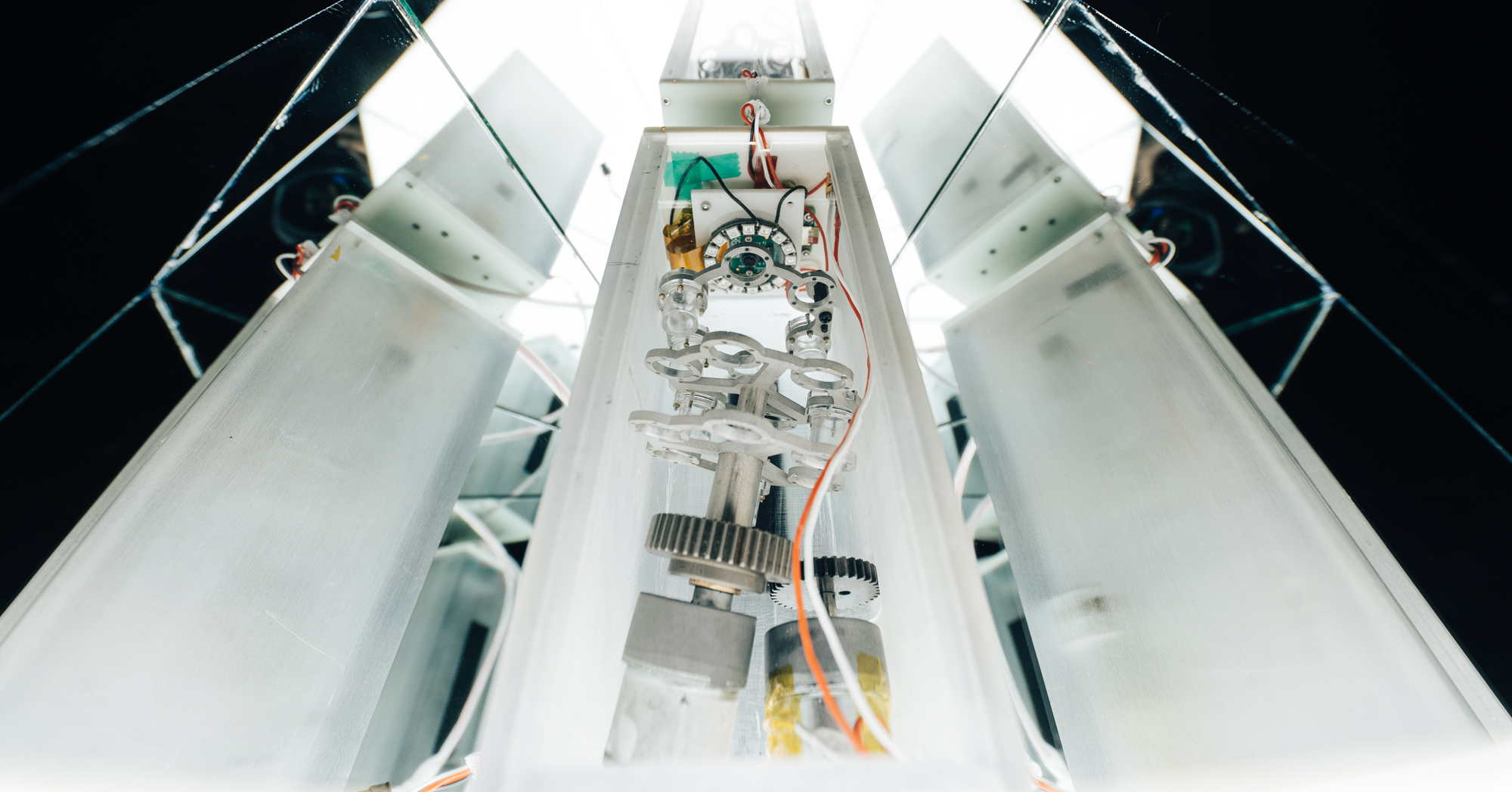
While Blue Origin and SpaceX have driven interest in human spaceflight, and even sparked bold statements about a new Space Age, the development of precision cosmology has further explored dark matter sitting silently in the void. In the deep space narrative, the flames of rocket boosters and high-energy cosmic rays entangle the obvious and the hidden, the surface and the interior. The exhibition attempts to explore a non-vertical, topological perspective towards the universe. In her long-term projects, Xin Liu has situated herself on the boundary line between celestial objects, experiences of deep space, the cosmic ecosystem, and many other topics, as well as within continuous translations of vocabularies from multiple disciplines. Within this exhibition, Liu retains her usual working methods developed around mapping, modeling, and precision instruments, and also constructs three narrative threads that run through the exhibition space: a potato seed that was transported to the International Space Station via manned space flight, an anonymous “white stone” from the sky, and a series of satellite signals radiating between the Earth’s orbit and surface. They all seem to be in motion: the instruments are rotating, the potato is sprouting, and the fallen object is rumbling. The pieces of technology, plants, debris, soil, shadows, and humans that appear in the exhibition seem to be governed by an unspoken, overarching rule, regardless of whether this can be called “the cosmos.” This invisible, overarching energy has more primitive associations and unfolds in a spiral circumscribing the exhibition’s verticality.

Flying above the ground could mean taking an expedition, or it could imply going into exile, while falling into the Earth’s core could be a return to orbit. The one-way vertical universe is confronting an epistemological reorganization. Beyond the upper bounds of engineering and the limits of mechanics, the political, technological, and cultural power projected into space constructs another kind of deep time that extends into deep space. It forces us to reconsider everything that we have inscribed or woven: people, fragments, signals, space minerals, and various suppositions and deductions in space. The dimension and speed of deep space narratives are being gradually dissolved into more diverse, poetic, entangled, and internalized forms, which may allow cosmic engineering and cosmic metabolism to achieve henosis (oneness). What the exhibition projects is simply one version of many potential narratives; it is condensed into a specific deep space that one human body is narrating. Here, the whole world falls straight down.
